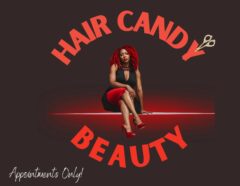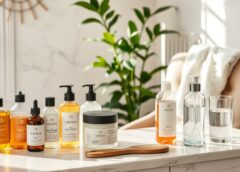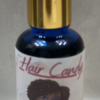Have you ever stared in the mirror, feeling your hair doesn’t look healthy? You’re not alone. Many of us deal with damaged hair from over-styling, harsh chemicals, or daily life. It can make your hair dry, brittle, and break easily.
As someone who’s been there, I know how tough it is. I once had healthy hair that turned into a tangled mess. It made me change my hair care routine for damaged hair and seek expert advice.
The good news is you can fix your damaged hair with the right care. We’ll explore hair repair treatments, moisture-rich products, and more. These will help you make your hair strong, healthy, and radiant.
Whether it’s from a bad color job, heat styling, or busy life, we’ve got you covered. We’ll share expert tips, product suggestions, and a step-by-step guide. Follow these to fall in love with your hair again.
Identify the Cause of Your Hair Damage
To fix dry and brittle hair, first find out why it’s damaged. Damage can come from heat tools, UV rays, hard water, pollution, and too much product. Knowing the cause helps you fix and protect your hair better.
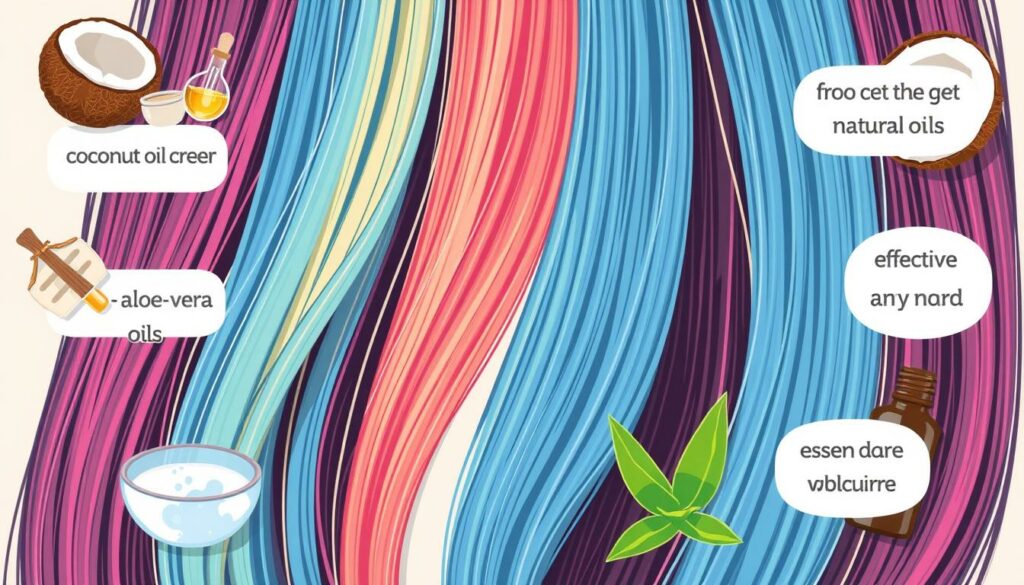
Bridgette Hill, a certified trichologist, says damage can be from inside or outside. Inside, it’s from meds, diet, and vitamins. Outside, it’s from coloring, products, heat tools, and UV rays. Spotting damage early helps fix and restore your hair’s health.
Mechanical Damage
Mechanical damage happens from daily styling, brushing, and the elements. It causes hair to tangle more and break. To avoid this, brush gently and use protective styles to reduce stress on your hair.
Chemical Damage
Chemical damage comes from hair treatments like dye, relaxers, and bleach. These make hair dry, brittle, and fragile. To lessen damage, wait longer between dye jobs and choose professional colorists.
Heat Damage
Heat damage is from using heat tools too often. Use them less and keep the blow dryer far from your hair. Use heat protectants and deep condition to shield your hair from heat.
Knowing why your hair is damaged helps you stop it from getting worse. Use the right tips to fix your dry and brittle hair. Remember, preventing damage is key, and a healthy scalp helps your hair grow strong.
Choose the Right Shampoo and Conditioner
Choosing the right shampoo and conditioner is key for damaged hair. Look for products that meet your hair’s specific needs. Whether it’s dryness, frizziness, or lack of volume, there’s a product out there for you. A haircare system that matches your hair type can greatly improve its health and look.
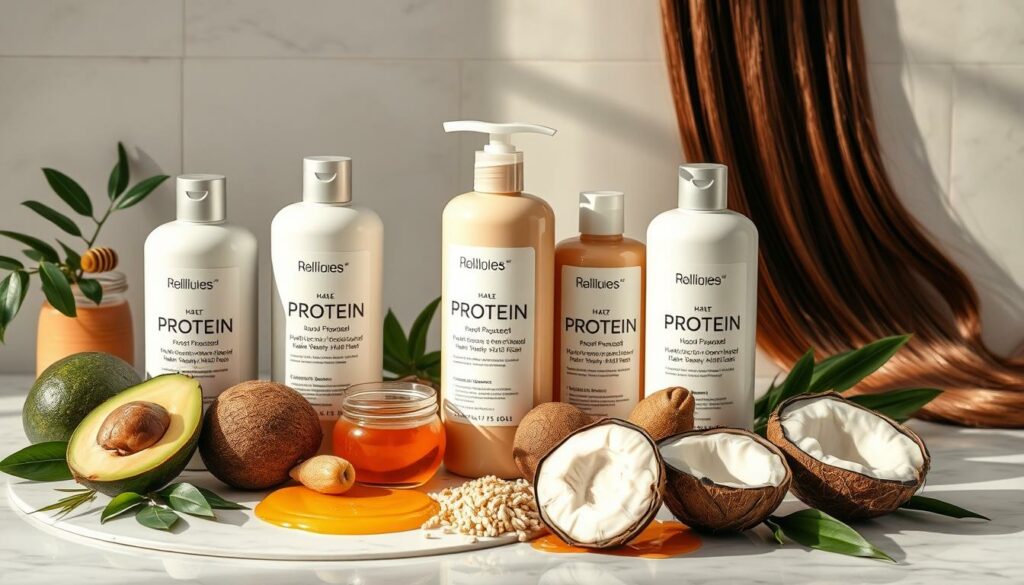
When shopping for shampoos and conditioners, watch for important ingredients. Moisturizing agents like natural oils, proteins, and humectants are vital for hydrating damaged hair. For color-treated hair, seek out products with UV protectants and color-enhancers to keep your hair vibrant.
Sulfate-Free Formulas
For damaged hair, consider sulfate-free shampoos. Sulfates can strip your hair of its natural oils, causing dryness and damage. Sulfate-free shampoos are gentler and better for sensitive scalps or color-treated hair.
Nexxus has a variety of sulfate-free shampoos for different hair concerns. The Nexxus Therappe Ultimate Moisture Shampoo is silicone-free and nourishes damaged hair. The Nexxus Ultralight Smooth Weightless Frizz Protection Shampoo controls frizz and smooths your hair.
Moisture-Rich Products
Damaged hair needs moisture, so choose conditioners rich in hydrating ingredients. Look for natural oils like argan, coconut, or jojoba. These can soften and smooth your hair. Protein-enriched products, such as the Nexxus Keraphix Damage Healing Conditioner, also help strengthen and repair damaged hair.
Apply conditioner mainly to the mid-lengths and ends of your hair. This is where damage is most common. Avoid your scalp to prevent buildup and weight. Moisture-rich products can help restore your hair’s health and beauty.
Incorporate a Deep Conditioning Treatment

To give your damaged hair extra TLC, add a weekly deep conditioning treatment to your routine. Deep conditioning masks and hair repair treatments are great for restoring moisture, strength, and elasticity. Regular use can change your hair’s chemistry, making it stronger and less damaged.
When picking a deep conditioner, look for nourishing ingredients like proteins, collagen peptides, and natural oils. These help fortify and protect your hair from the inside. Some top picks include the SheaMoisture Intensive Hydration Hair Masque (4.6/5 stars on Amazon), Cécred Moisturizing Deep Conditioner (4.7/5 stars), and It’s a 10 Miracle Hair Mask (4.9/5 stars).
For the best results, apply your deep conditioning treatment to dry hair before shampooing. This lets the product deeply penetrate the hair shaft, providing intense hydration and nourishment. Leave it on for 10-30 minutes, then rinse well and use your regular shampoo and conditioner.
Whether your hair is dry, damaged, color-treated, fine, or brittle, there’s a treatment for you. Try different products to find the best one for your hair type and concerns. With regular use, you’ll see a big improvement in your hair’s health, strength, and look.
Apply Leave-In Conditioner for Added Hydration
After washing your hair, apply a nourishing leave-in conditioner. It helps restore moisture and improves hair health. Leave-in conditioners work for almost all hair types, including curly, straight, natural, and color-treated hair.
They are great for dry, damaged, or frizzy hair. They add extra hydration and fight frizz.
When picking a leave-in conditioner, look for moisture-rich hair products that fit your hair type and needs. For example, if you use heat tools often, choose a leave-in conditioner with heat protection. Color-treated hair benefits from formulas that preserve color, while fine hair needs volumizing leave-in conditioners.
Lightweight Formulas
It’s key to pick lightweight leave-in conditioners. They won’t weigh your hair down. Unlike rinse-out conditioners, leave-in products are designed to be light and detangle without residue.
This is crucial for fine or thin hair. Heavy products can make hair look flat and lifeless.
Heat Protectant Properties
If you use heat tools like flat irons or blow dryers, protect your hair from heat damage. Look for leave-in conditioners with heat protectant serums. These products create a barrier and prevent heat damage, breakage, and split ends.
Remember, leave-in conditioners are generally safe but can cause allergic reactions in rare cases. If you experience irritation or burning, stop using it. Regular use of a good leave-in conditioner improves hair moisture, manageability, and health.
Be Gentle When Brushing and Styling
Wet hair is very fragile. It needs gentle care to avoid damage. Use a wide-tooth comb or a wet brush to detangle. Start at the ends and work up to remove knots.
Let your hair air dry as much as you can. This helps prevent damage. When blow-drying, use a boar bristle brush or one with a mix of plastic and boar bristles. These are gentler than metal brushes.
Apply a heat protectant spray before using hot tools. Try to use heat styling less and choose gentler, heatless styles instead.
Choosing the right products is also key. Look for anti-breakage shampoos and conditioners with keratin, biotin, and natural oils. These strengthen your hair, making it less prone to breakage and split ends.
Combining gentle handling, the right products, and a consistent routine can revive damaged hair. By following these tips, you can improve your hair’s health, shine, and look.
Trim Split Ends Regularly
Preventing split ends is key to healthy hair. But, regular trims are crucial to keep your hair in great shape. Trimming split ends stops them from traveling further up the hair shaft. This simple step is vital for reviving dry and brittle hair.
Try to get a trim every 6-8 weeks to keep your hair healthy. This lets you remove the oldest, most fragile parts of your hair. If your hair is severely damaged, you might need a bigger cut to get rid of the bad parts and let new hair grow.
Schedule Appointments Every 6-8 Weeks
Being consistent is important for healthy hair and preventing split ends. By seeing your stylist every 6-8 weeks, you can keep your hair care on track. This way, you avoid needing big cuts to fix extensive damage.
But, if you’re growing out your hair, you might think about skipping trims. This could actually harm your hair growth. Regular trims help keep your hair strong and promote better growth in the long run.
Embrace Your Natural Texture
In recent years, embracing natural hair textures has become more popular, especially in the Black community. Black History Month themes like “Black Health and Wellness” highlight the risks of frequent chemical relaxer use. This has led more women to choose natural hair care routines.
As part of your damage control hair tips, consider giving your hair a break from heat styling. Let your natural texture shine.
Air Dry When Possible
Letting your hair air dry is a great way to minimize damage. Heat styling tools like blow dryers and flat irons can cause dryness and breakage. If you must use heat tools, apply a heat protectant and use the lowest heat setting.
Use Texture-Enhancing Products
Embracing your natural texture doesn’t mean you can’t use styling products. There are many products designed to enhance curls, waves, or coils. Look for curl creams, mousses, and gels that add moisture and definition without weighing your hair down.
Brands like Aveda and L’Oréal Paris offer a wide range of products for different hair types. This makes it easy to add texture-enhancing products to your hair care routine for damaged hair.
Protect Your Hair While You Sleep
Keeping your hair safe at night is key to a good hair care routine. Pillow friction and bedtime styling can harm your hair. Simple changes to your bedtime routine can help. They can make your hair less dry and brittle, reducing breakage and tangles.
Silk or Satin Pillowcases
Switching to a silk or satin pillowcase is a simple fix. These fabrics let your hair slide smoothly, avoiding breakage and frizz. Experts say silk and satin pillowcases keep hair oils in, making it look healthier.
Overnight Hairstyles to Prevent Tangling
Styling your hair right can also help. For long hair, try braiding or a soft bun to avoid tangles. Short hair? Use a soft headband or silk scarf to keep it in place.
Before bed, brush or comb your hair gently. Use a leave-in conditioner or serum to moisturize and protect. The L’Oréal Paris Elvive Dream Lengths Frizz Killer Serum Leave-In is great for this, with castor seed oil to strengthen and smooth your hair.
By following these tips, you can make your hair healthier and more beautiful every morning.
Hair Care Routine For Damaged Hair
If your hair is damaged, you need a special care routine. This routine should focus on repair and restoration. Using the right products and techniques can make your hair healthier and more vibrant. Here’s a simple guide to help you:
Step-by-Step Guide
Start by choosing a gentle, sulfate-free shampoo and conditioner. Look for products made for damaged hair. They often have keratin, biotin, and essential oils. Massage the shampoo into your scalp and work it through your hair. Then, use a moisture-rich conditioner on the mid-lengths and ends.
Once a week, use a deep conditioning mask or hair repair treatment. These formulas deeply nourish your hair. Apply the mask to damp hair, comb it through, and let it sit for 10-15 minutes before rinsing.
After washing, apply a leave-in conditioner or anti-breakage serum. These products add extra moisture and protection. Use a wide-toothed comb or your fingers to detangle your hair gently, starting from the ends.
Product Recommendations
When choosing hair care products, look for ones that meet damaged hair’s needs. Here are some good options:
- Anti-breakage shampoos: These gentle cleansers strengthen and fortify your hair, reducing breakage and split ends.
- Moisture-rich conditioners: Choose conditioners with shea butter, coconut oil, and avocado oil to moisturize dry, brittle hair.
- Protein-enriched hair masks: Deep conditioning masks with protein repair and rebuild damaged hair, making it stronger.
- Leave-in treatments: Lightweight leave-in conditioners and serums add hydration and protection, keeping your hair healthy all day.
By using these products and techniques, you can improve your hair’s health and look. Be patient and consistent, as restoring your hair’s strength and shine takes time.
Nourish Your Hair from the Inside Out
Using the right hair treatments and products is important for dry and brittle hair. But, nourishing your hair from the inside is just as crucial. What you eat and how much water you drink greatly affects your hair’s health and look.
Balanced Diet Rich in Vitamins and Minerals
Eating a balanced diet with essential vitamins and minerals is vital for healthy hair. Biotin, vitamin C, and iron are key for hair growth and strength. Add foods like eggs, nuts, leafy greens, and fruits to your meals to nourish your hair.
Studies show that a diet rich in protein, essential fatty acids, and B-vitamins helps produce keratin. Keratin is a protein that supports hair health and strength. By eating the right foods, you can help repair your hair and prevent damage.
Stay Hydrated
Drinking lots of water is key for healthy, hydrated hair. Dehydration makes hair dry and brittle, leading to breakage and damage. Try to drink at least eight glasses of water a day to keep your body and hair hydrated.
Research indicates that staying hydrated moisturizes your skin and hair from the inside. When your body is hydrated, it can better send nutrients to your hair follicles. This promotes healthier hair growth and reduces dryness and brittleness.
Be Patient and Consistent
Fixing damaged hair takes time and effort. Stick to your hair care routine for damaged hair and let your hair heal. It might take weeks or months to see big changes, but your hard work will be worth it.
When you follow these damage control hair tips, choose the right products and handle your hair carefully. Use sulfate-free shampoos and deep conditioning treatments. Also, try to use less heat styling to prevent more damage. Getting regular trims every 6-8 weeks can stop split ends from getting worse.
Being consistent is crucial for your hair care routine for damaged hair. Use moisturizing products and apply leave-in conditioners or hair oils. Also, protect your hair while you sleep. These small actions can greatly improve your hair’s look and health.
If your hair is very damaged or you’re not sure what to do, get help from a hairstylist or trichologist. They can give you specific advice and treatments to help you reach your hair goals.
Remember, fixing damaged hair is a journey that needs patience and dedication. Keep up with your hair care routine for damaged hair, be gentle with your hair, and trust that with time and care, you’ll get your hair back to its best.
Conclusion
Fixing damaged hair needs a good hair care plan and the right products. You must find out why your hair is damaged. This could be from heat styling, chemical treatments, or the environment.
Use products that add moisture, strengthen, and shine to your hair. Moisture-rich products, anti-breakage shampoos, and deep conditioning masks are key. Also, getting regular trims every 6-8 weeks stops split ends.
Choose protein-enriched hair care and heat protectant serums for styling. Always go for your natural hair texture. Be gentle when brushing and detangling to avoid breakage.
Eating well and staying hydrated also helps your hair grow strong. A balanced diet and plenty of water are essential.
With time, patience, and the right tips, you can make your hair healthy and shiny. Remember, fixing your hair takes effort. But with the right care and products, you’ll get the beautiful hair you want.
FAQ
What are the signs of damaged hair?
Damaged hair shows signs like split ends and dry texture. It can also be dull, frizzy, and prone to tangling. Regularly check your hair for damage to know if you need to change your care routine.
Can you repair split ends?
You can’t fix split ends, but you can stop them from getting worse. Get regular trims, every 6-8 weeks, to keep your hair healthy. For severe damage, you might need a bigger cut to let new hair grow.
What are the main types of hair damage?
Hair damage comes in three types: mechanical, chemical, and heat. Mechanical damage happens from daily wear and tear. Chemical damage is from hair treatments. Heat damage comes from using hot styling tools too much. Knowing the cause helps you fix your hair.
What ingredients should I look for in hair care products for damaged hair?
For damaged hair, choose sulfate-free shampoos and conditioners rich in moisture. Look for products that repair bonds and smooth your hair. Deep conditioners with proteins and collagen peptides can strengthen your hair and protect it from further damage.
How often should I use a deep conditioning treatment?
Use a deep conditioning mask once a week to revive your hair. These treatments are crucial for damaged hair, helping with dryness, split ends, and breakage.
What type of pillowcase is best for damaged hair?
Cotton pillowcases can damage your hair while you sleep. Use a silk or satin pillowcase instead. It lets your hair slide smoothly and prevents tangles and breakage. Try protective hairstyles like braids or twists to keep your hair safe at night.
How can I nourish my damaged hair from the inside out?
Use the right hair products and eat well to repair your hair. A balanced diet with vitamins and minerals, like biotin and iron, is key. Drinking water keeps your hair hydrated and healthy.
